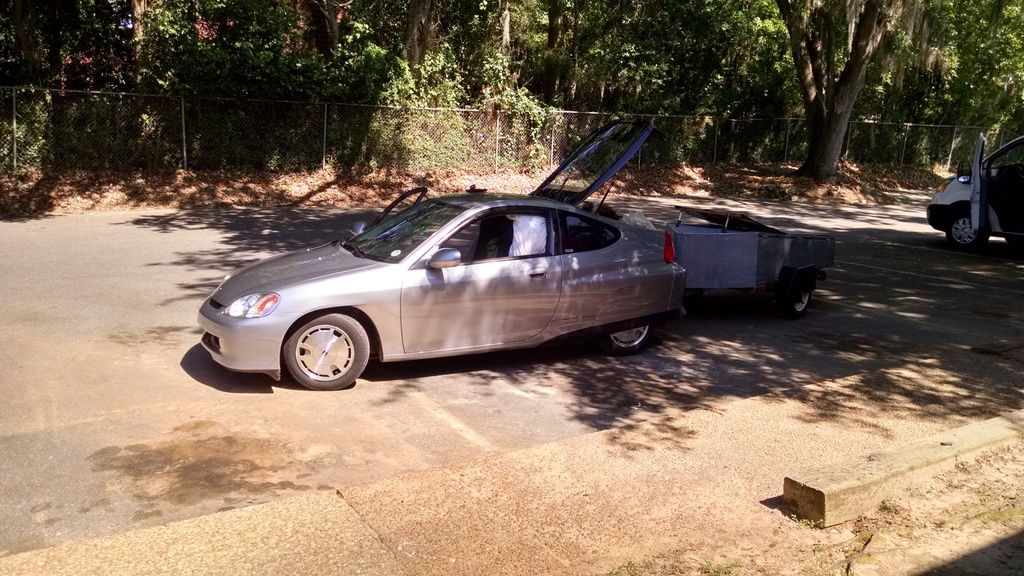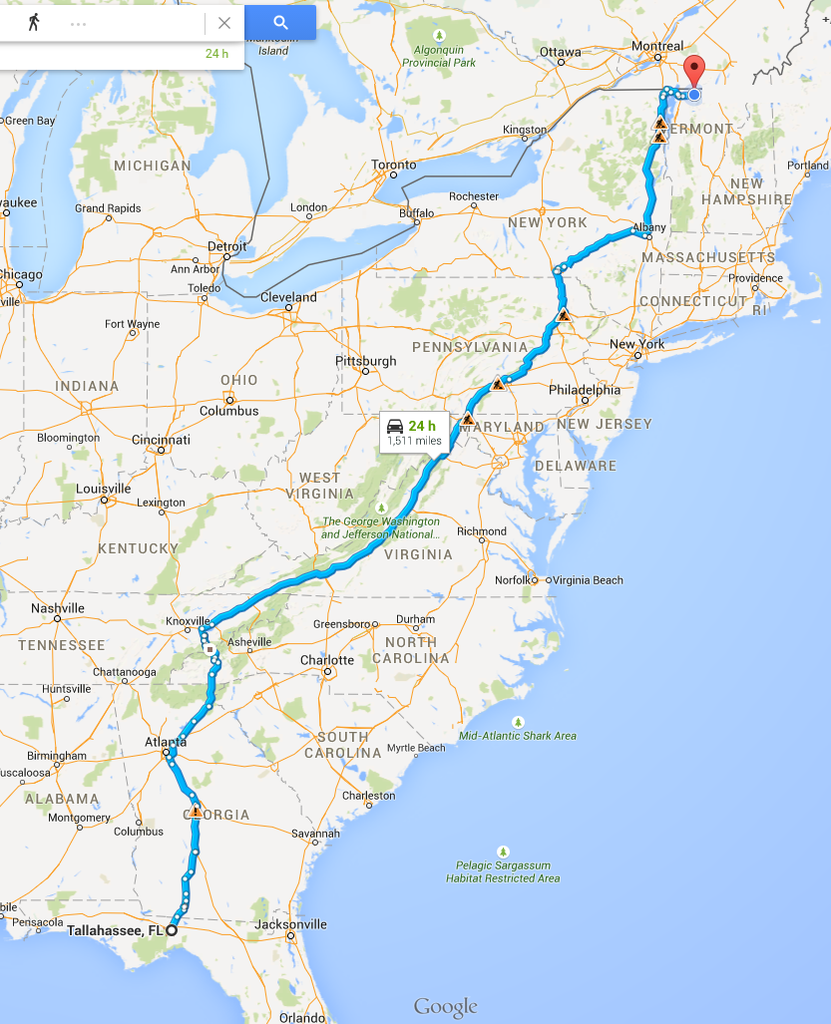 Today Today
|
|
|
|
 Other popular topics in this forum...
Other popular topics in this forum...
|
|
|
|
 05-25-2016, 01:10 AM
05-25-2016, 01:10 AM
|
#12 (permalink)
|
|
Master EcoModder
Join Date: Jun 2008
Location: Earth
Posts: 5,209
Thanks: 225
Thanked 812 Times in 595 Posts
|
Quote:
Originally Posted by freebeard

West of the Rockies you get everything from fjords to rolling farmland.
|
Though rolling farmland hardly qualifies as mountains, now does it? Nor do I think you'll find many places east of the Rockies where you can climb ~4500 ft in about 12 miles. |
|
|

|
 05-25-2016, 11:43 AM
05-25-2016, 11:43 AM
|
#13 (permalink)
|
|
Master EcoModder
Join Date: Aug 2012
Location: northwest of normal
Posts: 29,407
Thanks: 8,364
Thanked 9,123 Times in 7,533 Posts
|
Well, it's a Range of something. Not as eroded as Appalachia though, they're some of the newest mountains on Earth; but still, the up-down-up-down kind (...straightenin' the curves, flattenin' the hills...).
So: How would you place the engine air shutters?
|
|
|

|
 05-26-2016, 02:42 AM
05-26-2016, 02:42 AM
|
#14 (permalink)
|
|
Master EcoModder
Join Date: Jun 2008
Location: Earth
Posts: 5,209
Thanks: 225
Thanked 812 Times in 595 Posts
|
Quote:
Originally Posted by freebeard

Well, it's a Range of something. Not as eroded as Appalachia though, they're some of the newest mountains on Earth; but still, the up-down-up-down kind...
|
I think my point got lost somewhere. Which is that if you have to climb ~4000 ft of 6% grade* or steeper on a hot day, your Insight will be seeing 230F or higher coolant temperatures before you reach the top - or at least mine does. That doesn't happen (at least in my experience), if you climb just 500 or 1000 ft, descend, then climb again.
*Which you won't often find east of the Rockies, Mt. Washington excepted. |
|
|

|
|
The Following User Says Thank You to jamesqf For This Useful Post:
|
|
 05-26-2016, 06:44 AM
05-26-2016, 06:44 AM
|
#15 (permalink)
|
|
Master EcoModder
Join Date: Dec 2011
Location: New Zealand
Posts: 5,142
Thanks: 2,930
Thanked 2,603 Times in 1,619 Posts
|
Taken from my build thread:
Quote:
Originally Posted by Ecky

On May 1st, my wife and I packed our 50lbs Border Collie, 15lb Sheltie, and everything we owned into the car and trailer. We pulled out the carpet and secret compartment box, and stuffed the spare tire area and other unused space completely full, with items like blenders, books, and clothing to fill in the gaps. The cargo area was packed to the roof, aside from approximately 2' x 3' for our Border Collie, and the Sheltie sat in my wife's lap. She had items around her feet, and we packed full the spaces beneath and behind our seats. We packed the trailer full too, with not enough space left to fit a book. I left my tools in an easy-to-access spot in the hatch, in case we had any major disasters.
I can only guess what the total weight was, but I would be surprised if the trailer had a pound less than half a ton, and there was at least 500lbs of stuff in the car too. With my wife and I, and a full tank of gas, we were probably at least 3500lbs total.

Our route:

Even under full assist, the car accelerated at a snail's pace. However, braking distance was still reasonable, and at no point did I experience any instability. I loaded the trailer so that the tongue weight was only around 50lbs, and handling was excellent.
We stopped the first night to camp at the edge of Great Smokey Mountains National Park.

Getting up to the top of Clingman's Dome required 2nd gear WoT almost the entire way. I kept an eye on coolant temperature, but it never exceeded 197F. The brakes held up great during the rapid 4000ft+ descent, and despite some serious potholes which scared the living hell out of me, the 2x2 and corrugated plastic trailer survived without any damage.
Even cruising at ~65mph when the speed limit allowed it, and frequently in 3rd gear at WoT to get up one mountain or another (I-81), I still averaged around 57mpg for the full trip pulling double the car's normal weight.
I consider the trailer experiment a success, but would consider upgrading the brakes if I frequently pulled close to a ton of cargo. |
The road leading up Clingman's Dome is 6-8% grade, and has approximately 4200ft in elevation change, and I was towing in the range of 1000lbs. In early May, with my upper block still in place, but lower block removed, I stayed under 200F. |
|
|

|
|
The Following 2 Users Say Thank You to Ecky For This Useful Post:
|
|
 05-26-2016, 11:24 AM
05-26-2016, 11:24 AM
|
#16 (permalink)
|
|
Master EcoModder
Join Date: Aug 2012
Location: northwest of normal
Posts: 29,407
Thanks: 8,364
Thanked 9,123 Times in 7,533 Posts
|
Quote:
|
I think my point got lost somewhere.
|
Mine too!
We're both off the topic. Maybe OP will come by and sort it out. |
|
|

|
 05-26-2016, 04:43 PM
05-26-2016, 04:43 PM
|
#17 (permalink)
|
|
EcoModding Apprentice
Join Date: Feb 2015
Location: Sacramento
Posts: 202
Thanks: 3
Thanked 225 Times in 91 Posts
|
Quote:
Originally Posted by He-man

Hello,
I am building a bumper that will have more of a slope to it. It will continue the angle that the hood is at when it ends, in the middle, right about the bumper. The bumper that i have designed will fill this gap and make a flush clean front.
I am wondering if it is possible to have this clean front without having cooling issues. Some ideas that i have thought of are to install an oversized radiator, or possible relocate the stock one so it would be further forward, in the custom bumper, with a small hole on the outside, but that would defeat the purpose of having a super clean and smooth front end.
Any ideas on how to make the aero improvement while remaining safe and cool?
Thanks!
I have a drawing that i can post if it would help but i don't have anything physical yet because i want to make sure the concept would work before i start the build.
|
I have done a lot of testing of grill blocks and custom bumpers, and have found that it is very difficult to improve on what the original engineers have done. When I decrease air flow to the radiator, the cooling fans are able to maintain the coolant temp at an acceptable average temperature, but there is more to it than that. When I watch the PIDs, I can see the temperature cycling up and down by 10 or 15 degrees F, in two minutes or less, and this cyclic temp change can be hard on your engine. Your temp gauge may indicate that the temp is fine, but you won't be able to watch the cyclic temp change.
When you watch the temp via a fast PID, you can see that your engine maintains a very steady temp, give or take about 2 or 3 degrees F, but when you start changing air flow through the radiator, you can create a new problem. |
|
|

|
|
The Following 3 Users Say Thank You to EVmetro For This Useful Post:
|
|
 05-27-2016, 05:31 PM
05-27-2016, 05:31 PM
|
#18 (permalink)
|
|
Master EcoModder
Join Date: Jan 2008
Location: Sanger,Texas,U.S.A.
Posts: 16,534
Thanks: 24,520
Thanked 7,436 Times in 4,817 Posts
|
230f
Quote:
Originally Posted by jamesqf

I think my point got lost somewhere. Which is that if you have to climb ~4000 ft of 6% grade* or steeper on a hot day, your Insight will be seeing 230F or higher coolant temperatures before you reach the top - or at least mine does. That doesn't happen (at least in my experience), if you climb just 500 or 1000 ft, descend, then climb again.
*Which you won't often find east of the Rockies, Mt. Washington excepted.
|
Some GM cars were designed with 255F cooling systems.I think they ran in excess of 20 psi.
Today's Corvette,at the track,is running 234F.
230 with the Insight is probably okay.Kill the AC and roll down the window until you're past the summit.
__________________
Photobucket album: http://s1271.photobucket.com/albums/jj622/aerohead2/
|
|
|

|
|